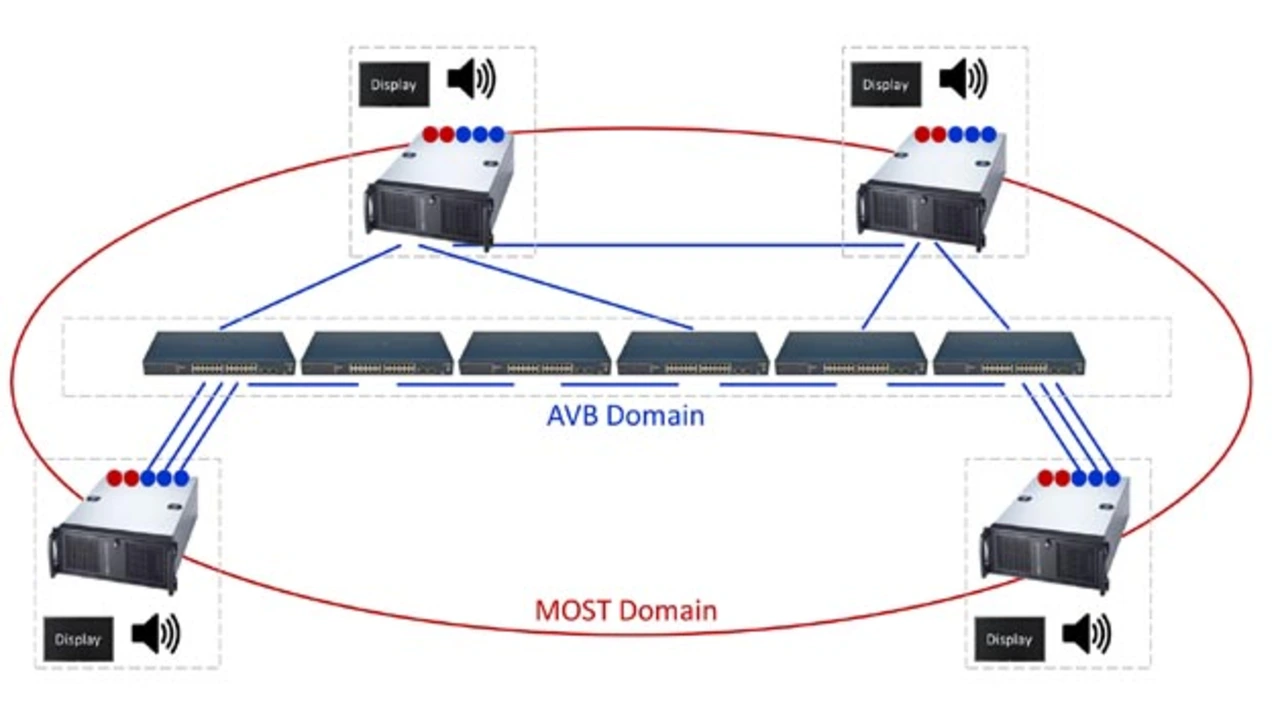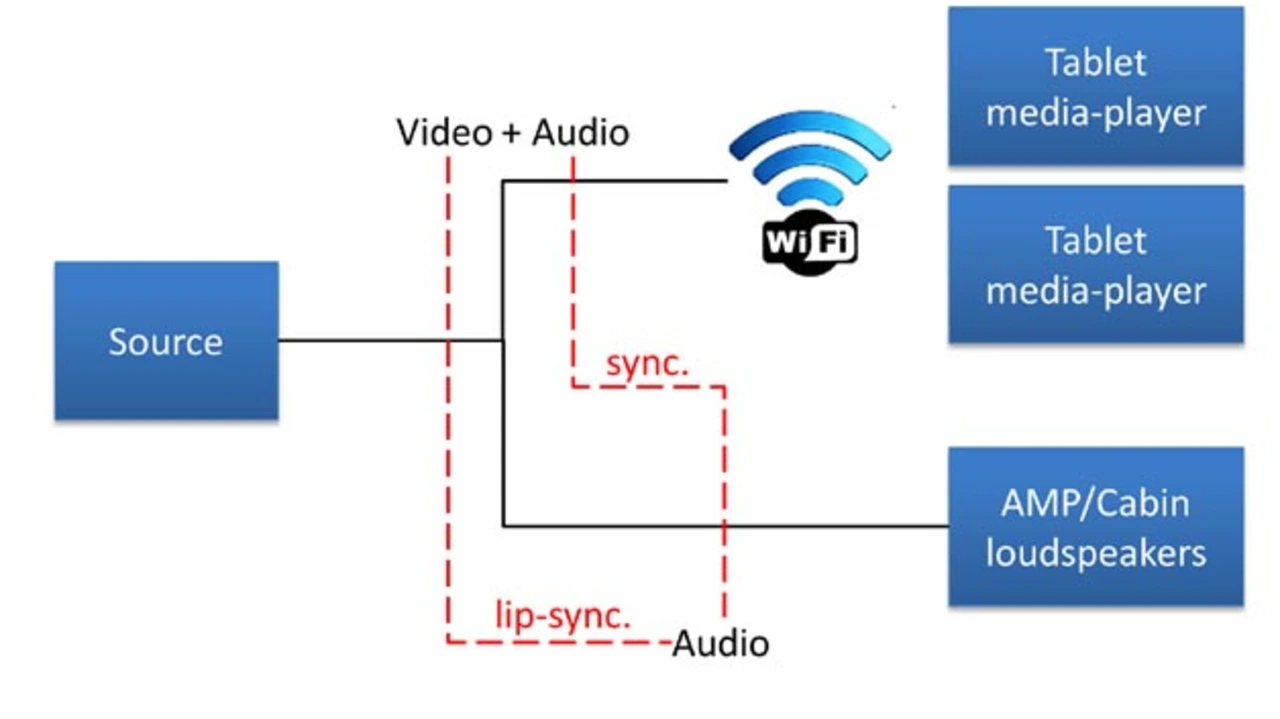MOST Network and System
MOST and AVB: Two Candidates for Infotainment Networks
Fortsetzung des Artikels von Teil 3
Evaluating AVB and interoperability

For these reasons, Daimler AG decided to build a system to evaluate both technologies on one single platform. MOST and AVB networking domains are combined by integrating multiple MOST and AVB adapters in standard PCs (Figure 3). The idea is to make use of a unified hardware, operating system and system clock environment to be able to correlate timestamps for both networking domains as a base method for evaluation on higher and application level. So it is possible to further explore interoperability scenarios between MOST and AVB, taking into account that Ethernet systems may be deployed in other time-sensitive automotive domains interacting with MOST technology deployed in the infotainment domain.
Daimler aims to evaluate the full scope of AVB standards and will include further AVB building blocks as soon as they are available. Based on the results of these investigations, the company plans to narrow down what will apply to automotive profiles of AVB and interoperation possibilities with other systems. A first step is to create exemplary implementations of scenarios that are typical for automotive infotainment, though yet not common in the consumer market. One scenario for AVB evaluation is application-level synchronisation of multiple media streams on different sinks, including CE devices (Figure 4). With AVB providing synchronisation on a network level, Daimler wants to investigate what additional measures have to be implemented to achieve application-level synchronisation and which preconditions have to be met.
As a second step, mapping of a present MOST150 system to AVB on the evaluation system will provide hands-on experience with AVB and allow direct comparison to the functionality and performance that MOST150 delivers. Driving the evaluation system to its limit, there will be an analysis of its behavior regarding factors such as synchronisation accuracy or impact on best effort traffic. Additionally, this will allow engineers to identify optimisation possibilities, for example by using static stream classification, reservation or traffic shaping.
It is also planned to use the evaluation system for research on how to integrate wireless CE devices. Applicability of AVB concepts for Wi-Fi is therefore another topic Daimler will investigate, though Wi-Fi AVB is anything but definite so far.
The main focus of the investigation will be the interoperation of MOST150 and Ethernet/AVB. Synchronisation of time and clocks is the basic property of both, and hence the premise for interoperation. Establishing a cross-system time base reference, therefore, is a key topic to build on for a gateway scenario. Another idea is to investigate possibilities to use or enhance the Ethernet channel of MOST to transparently support AVB. Finally, incorporating the steps mentioned before, the target scenario is cross-system, synchronised video-streaming, integrating wireless CE.
Jobangebote+ passend zum Thema

- MOST and AVB: Two Candidates for Infotainment Networks
- MOST and AVB in comparison
- Differences between both technologies
- Evaluating AVB and interoperability
- Authors: